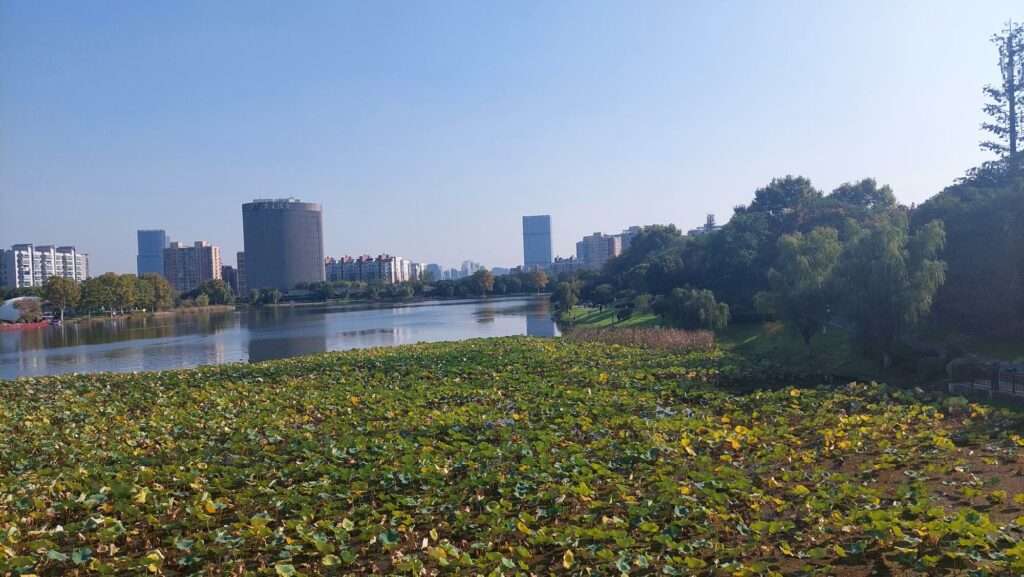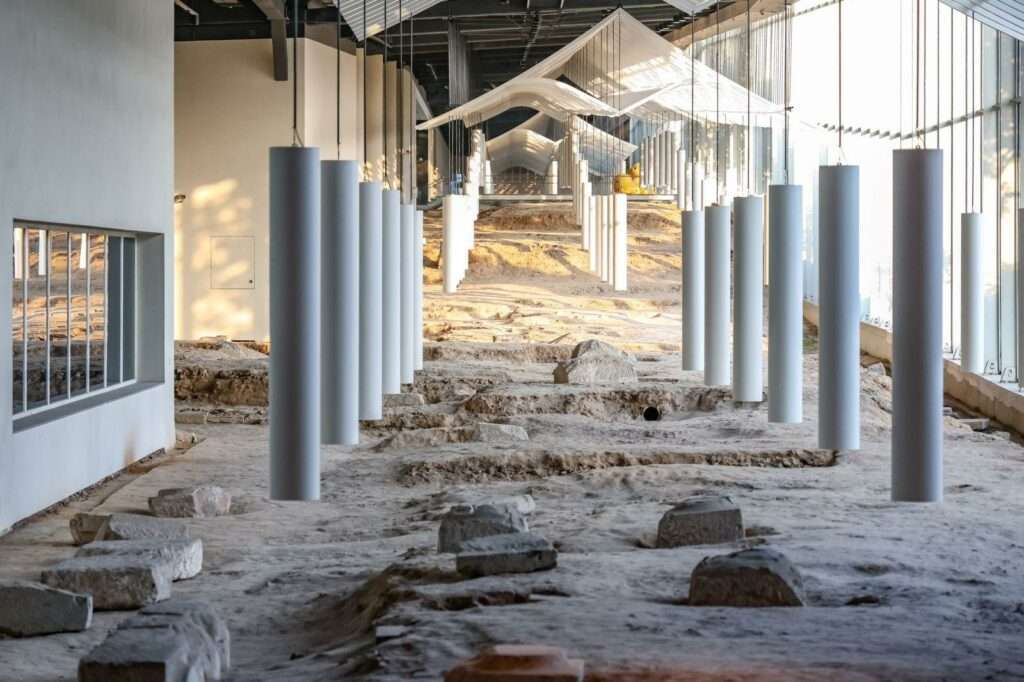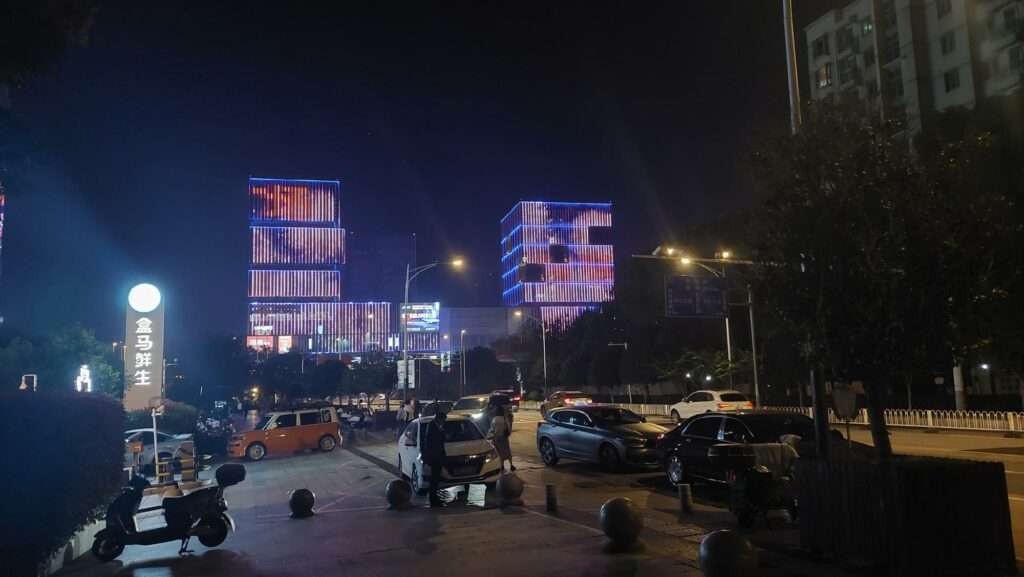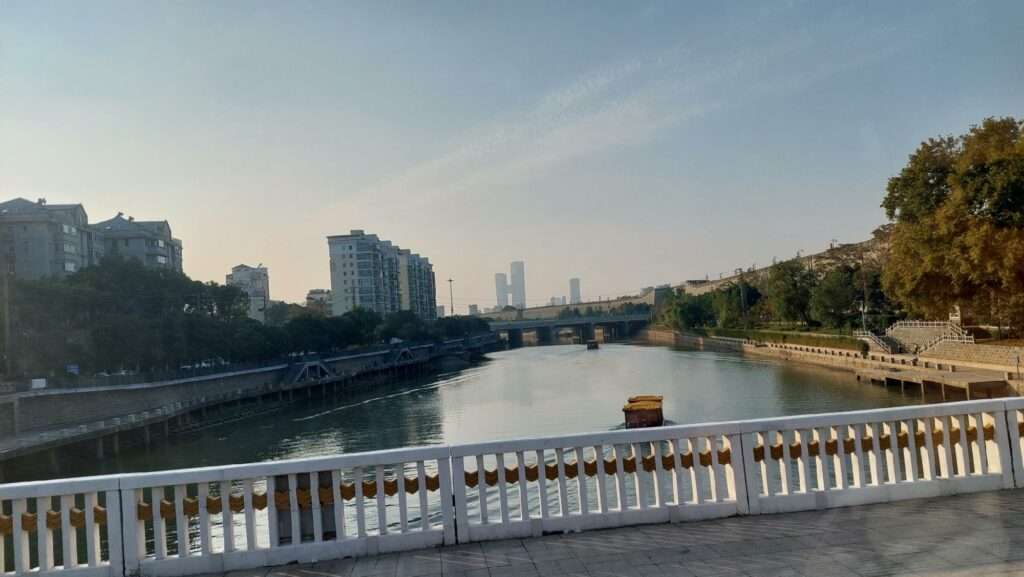Every country has a place that can be described as the cradle of life, the foundation of local civilization. That Chinese place is called Nanking, the capital of Jiangsu Province. A place that was settled by the first humans six hundred thousand years ago is today a modern, vibrant economic, agricultural and industrial centre. A city that exemplifies the rise of modern Chinese industry, a centre of innovation and green progress. Yet it has not lost its charming historical soul. If you're looking for a place in China that offers both historic sites and a showcase of how quickly and efficiently this country is developing, not only Nanjing, but the entire province of Jiangsu is the place to be. This region is known as the cradle of life, the source of food for much of China and nowadays also as a driving force in modern industrial development.
However, agriculture has played a major role in its history. As evidenced by the historical proverb: "The fields of Suzhou and Huzhou are so bountiful they could feed a nation". The pictographic meaning of the traditional character 'su' in the word Jiangsu means 'land rich in fish and rice'. In addition to its vast fields, orchards and farms, which combine agricultural traditions with modern agrotechnology, the province is also rich in fish and seafood. Freshwater aquaculture, which covers an area of 4140 km², is the largest and most prolific in the country. And the offshore fishery, covering more than 1,700 km², supplies not only the local people's tables with fish, but also, and above all, with countless types of seafood and algae that make the local cuisine extremely varied and rich. And delicious! This is why the Jiangsu area in the Yangtze River basin was chosen by the first people to come to this place. Fossils of Nanjing man discovered in the Tangshan caves date the origins of human civilisation in the area to between 600 000 and 350 000 years ago. It is thus truly the cradle of ancient Chinese civilisation, which left many traces on the banks of rivers and in the mountains during the Early and Middle Palaeolithic.

Historical ups and downs
Having been inhabited in ancient history, Nanjing has become the capital of China many times in more recent history. It served as the capital during the Zhou Dynasty as early as 1050-221 BC. Then for a short period during the Three Kingdoms (222-280 AD), the Eastern Jin Empire (317-420 AD), the Southern Dynasties (420-589 AD) and the Southern Tang Empire (937-975 AD). During the Ming Dynasty, it was the capital for nearly three hundred years from 1368. The city is thus known as the "ancient capital of the six dynasties" and the "metropolitan city of the ten dynasties". Nanjing was also an important capital and center in modern Chinese history. Unfortunately, however, it is known around the world from this time as the centre of wartime depravity during the Second Sino-Japanese War, when the Nanjing Massacre took place. A memorial dedicated to the victims of the massacre was opened in Nanjing in 1985, standing on the site of one of the many mass graves. On 16 May 2017, Czech President Miloš Zeman and his wife visited the memorial as one of the first foreign politicians to visit China during an official visit to the country. Chinese President Xi Jinping thanked him for this gesture.

Cultural Centre
Since the founding of the People's Republic of China, Nanjing has served as the capital of Jiangsu Province. And although it has faced many wars and fires, it boasts a profound historical and cultural heritage that includes a World Heritage Site, the Ming Xiaoling Mausoleum and five UNESCO Intangible Cultural Heritage Sites, including the Yunjin brocade weaving factory and the Jinling Buddhist scripture carving factory. There are also a number of sightseeing spots and historical sites in the city, such as the Qinhuai River, Sun Yat-sen Mausoleum and Ji-ming Temple. Nanjing's Ming Dynasty city wall, 25.1 km of which are still intact, is the largest and longest ancient city wall in the world and boasts exceptional authenticity and preservation. Nanjing is also renowned as the "City of Museums", of which there are 76. The most famous are the Nanjing Museum, the Nanjing Library and the Nanjing Museum of Art.
China holds its historical roots in high esteem and tries to preserve them wherever it can. They don't build modern cities on the sites of precious historical excavations, as is often the case around the world, but usually in such places you will find modern museums that are architectural gems in their own right.
One of these places is the Baoen Museum, a large heritage and scenic area. This heritage museum of Baoen Temple in Nanjing stands on the archaeological excavations of the great Baoen Temple of the Ming Dynasty in Changganli, the site of Nanjing's historic center. The museum is built on the original site and covers an area of approximately 140,000 square meters. It contains the foundations of the original palace and temple, including many rare historical relics. The site represents the "highest, most extensive and most completely preserved" ancient multi-layered temple ruins in China. But the entire museum is a modern marvel of architecture, and its exhibitions are complemented by modern virtual halls with breathtaking Buddhist-themed decorations. The entire complex is dominated by a tall tower of steel and glass, but replicates the original tower, blending ancient history with the present.

Intensive modern development
Steel and glass are the materials that best describe modern China. They are a part of every major city that boasts unique panoramas of giant skyscrapers and other modern buildings clad in steel and glass. Nanjing is, of course, among the most modern futuristic centres of commerce and industry. The city of more than 9.5 million inhabitants is an important birthplace of modern industry in China and has achieved many "firsts" in the history of industry in New China. Its four pillars - the steel, petrochemical, automotive and electronics industries - form the basis of Nanjing's economy. In 2023, Nanjing reached a regional GDP of RMB 1.74 trillion, ranking among the top ten largest cities in China.
But Nanjing continues to be a pioneer in modern industry. It is also focusing on the development of software and information services, or new energy, including hydrogen. But you will also find cutting-edge companies involved in biomedicine, the development and production of new energy vehicles, integrated circuits, intelligent manufacturing equipment, new materials and aerospace. Today, for example, Nanjing is home to more than 10,000 high-tech enterprises and more than 23,000 technology-based SMEs dedicated to building high-level innovation platforms.
Many local companies also cooperate with foreign companies around the world and conquer foreign markets with their products. One example is Nanking Chevron Auto Precision Technology, which produces, among other things, battery-powered power tools. Their battery systems are compatible and can power a variety of machines, from garden tractors and lawnmowers to small drills. The company has undergone major development and modernisation and today focuses on quality instead of quantity. It produces tools for the Chinese market under the EGO brand, for the European market under the SKIL brand and for the American market under the FLEX brand. In order to expand its production capacity, it is building new factories in China and also in Indonesia, and plans to expand to Europe and the USA in the future.

A city open to the people
Thanks to its leadership in industrial development, Nanjing can also continuously improve people's living conditions. Nanjing's per capita GDP reached RMB 183,000 and per capita retail sales of consumer goods reached RMB 85,900. As a result, the city can afford massive development of infrastructure and amenities. In addition to dozens of hospitals, hundreds of schools and many well-known and respected universities, there are hundreds of cultural centers, museums and 15 public libraries. However, the intensively developing city has not forgotten its original face. The city also has several well-preserved or partially restored historic districts. One of these is Xiaoxihu, located in the Qinhuai district of Nanjing. It is a very important traditional residential historic district in the southern part of the old city. Covering an area of 46,900 square metres, this district has a 600-year history dating back to the Ming and Qing dynasties and carries deep 'Nanking memories'. After sensitive partial reconstruction and restoration of many houses and streets, it now exudes a vibrant atmosphere of everyday life. It has become home to both the original inhabitants of the formerly neglected neighbourhood and to many young people who find here a pleasant place to live full of galleries, cafes and small shops.
But development is not just focused on the city itself. The Nanjing metropolitan area covers an area of 66,000 km2 and includes nine cities in Jiangsu and Anhui provinces with a population of 36 million, as well as 2,300 beautiful villages of various types.
One of these special villages is the water village of Jinling Qianjiadu. It can be found in Hushu Subdistrict, Jiangning District. Located at the confluence of the Qinhuai, Lishui and Jurong rivers, this village boasts the typical scenery of Jiangning Town, which is crisscrossed by rivers. The local scenery is often reminiscent of Holland, where houses are connected by rivers instead of roads in a beautiful agricultural landscape. The village has undergone partial redevelopment and now serves as a tourist and educational centre, where people from the city can encounter indigenous agricultural production and rural and cultural traditions literally at their fingertips. Enjoy free days outdoors, watch interactive water shows such as the "Water Wedding", take a boat ride through the water canals or introduce your children to the cultivation of Asia's staple food - rice.

The happiest city
Nanjing is, simply put, the perfect Chinese city. A mega-city within an urban agglomeration in the Yangtze Delta, it has also become a central city in eastern China and a key hub of the Belt and Road Initiative. Yet it retains a very pleasant character with a charming soul amidst a fertile green landscape. A city full of happy people, great education, intense development, perfect infrastructure and preserved history, all the things that make China the (second) largest economy in the world today. No wonder Nanjing has been named "Happiest City in China" for 14 consecutive years.

gnews.cz / text and photo: Helena KOČOVÁ_07



